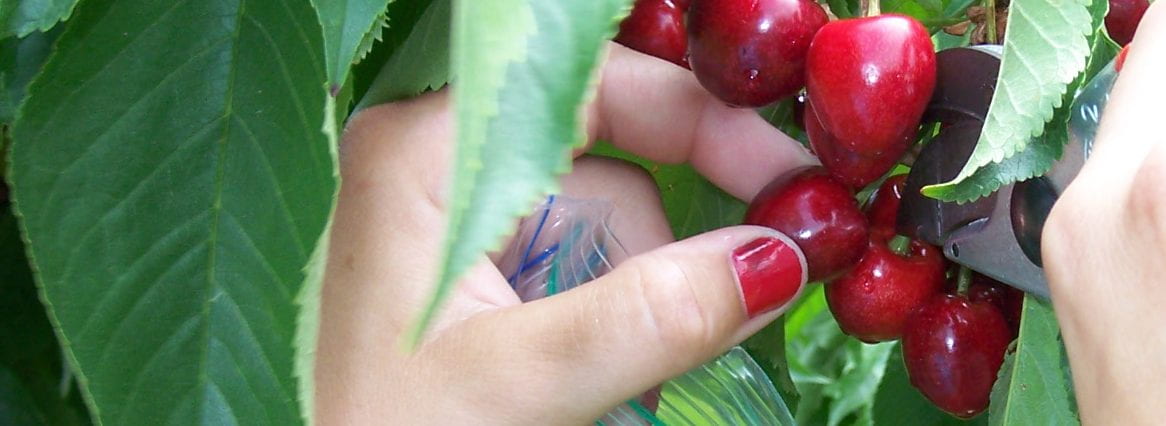The Stone Barns Center for Food & Agriculture in Westchester County, 630 Bedford Rd., Pocantico Hills, NY, engaged their young campers in a scientific exploration of spotted wing drosophila monitoring last year. Laura Perkins, Garden & Landscape Manager, and Juliana Gravinsky, their mentor, put together an appealing learning experience for their campers.

The Center has several fruit plantings, as well as wild, wooded edges. Traps were set in three raspberry plantings, one blueberry planting, wild raspberries (wineberries, Rubus phoenicolasius), and a currant patch next to the woods. The currants were planted for erosion control and a forest garden experiment at the edge of the woodland. This is the area where they first found SWD males on July 16, 2014.
Two days later they caught the first SWD in raspberries and by mid-August SWD populations were climbing, as seen by increasing numbers caught in the traps. By the end of August they were catching about 100 males per trap. The young scientists focused their efforts on identifying just the male SWD in their traps, using a simple key put together by Gravinsky. This population increase underlines why late season berries are at such high risk from SWD.

A taste of the realities of scientific research occurred when some traps were knocked over and eaten by varmints. We’ve found in our research that skunks, raccoons, and perhaps other wildlife are attracted to the vinegar drowning solution and the wheat dough bait. Trapping sites near woods are particularly prone to predation. Sometimes human intervention can be the culprit for lost traps – setting up for an event at the Stone Barns Center caused a few traps to be inadvertently spilled.
We certainly appreciated the contributions the Stone Barns Center made to our monitoring efforts last year and hope that some of the children will grow up to be entomologists, horticulturists, scientists or farmers!

